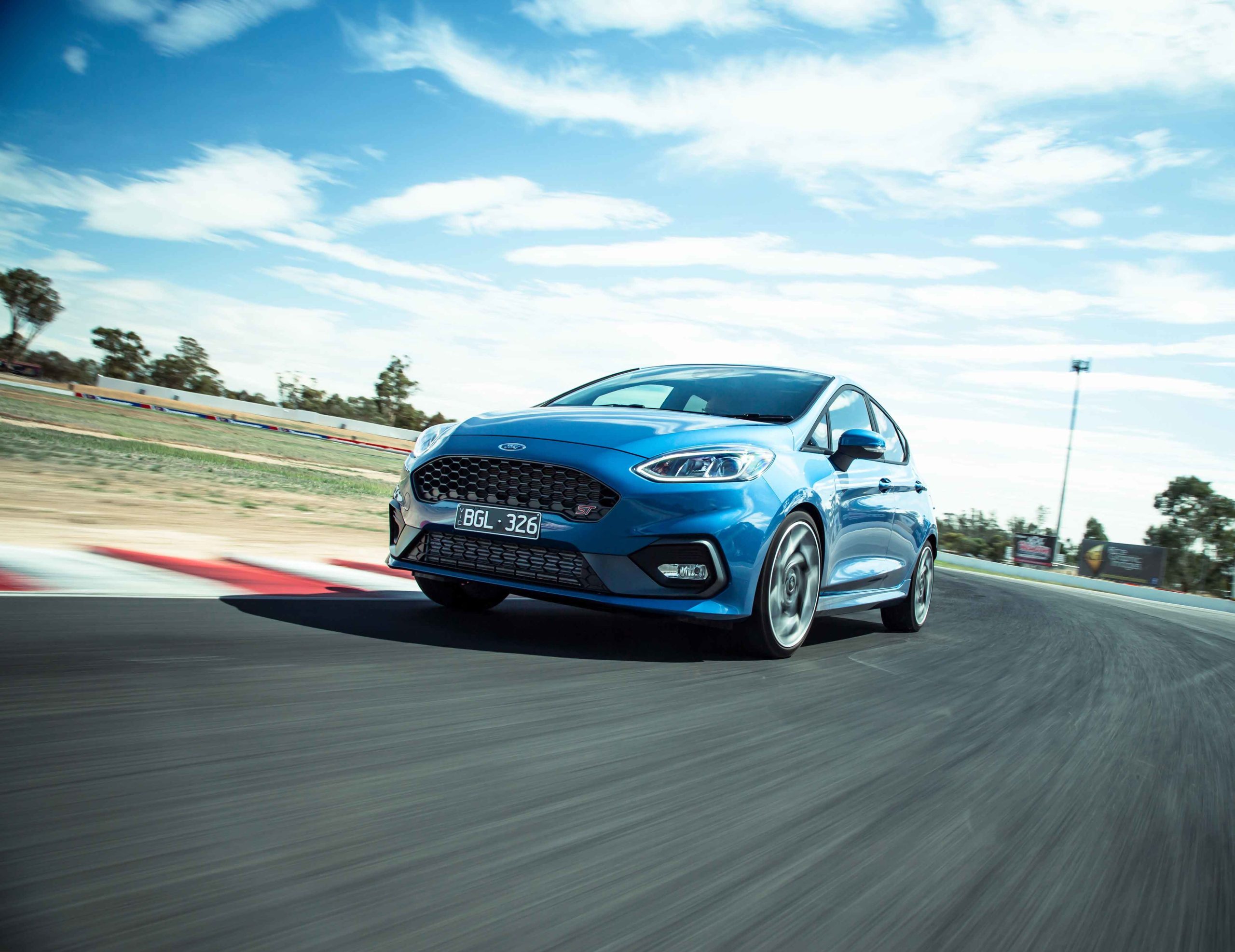
What is it?
The follow-up to one of the best hot hatches of the past decade. The out-going Fiesta ST was a pocket rocket – an ideal blend of power, grip and excitement in a three-door package. While not as fast as its larger competition (its big brother, the Focus ST and the Volkswagen Golf GTI) it could hold its own across the same piece of tarmac and arguably put a wider grin on your face.
So were a lot of expectations when we climbed aboard this new model which is a different proposition in many ways. For starters it’s both bigger and smaller at the same time – growing into a five-door body but shrinking the engine from four-cylinders to just three.
Fortunately, that same balance power, grip and excitement is still the same.
Does it have any racing pedigree?

The Fiesta ST may be the smallest member for the Ford Performance family but it’s one of its biggest heroes, being used as its vehicle for the World Rally Championship. The compact dimensions of the European-only three-door model make it an ideal platform for the brand’s rally weapon.
And it has stretched beyond the WRC too, with the Fiesta R5 a popular national rally car while old WRC examples have found new lives in Rallycross competition and as hoon-mobiles for internet megastar Ken Block. In fact, Ford has cleverly leveraged Block and the ST to help shift the image of the Fiesta from a shopping car to something more aspirational.
What’s under the bonnet?
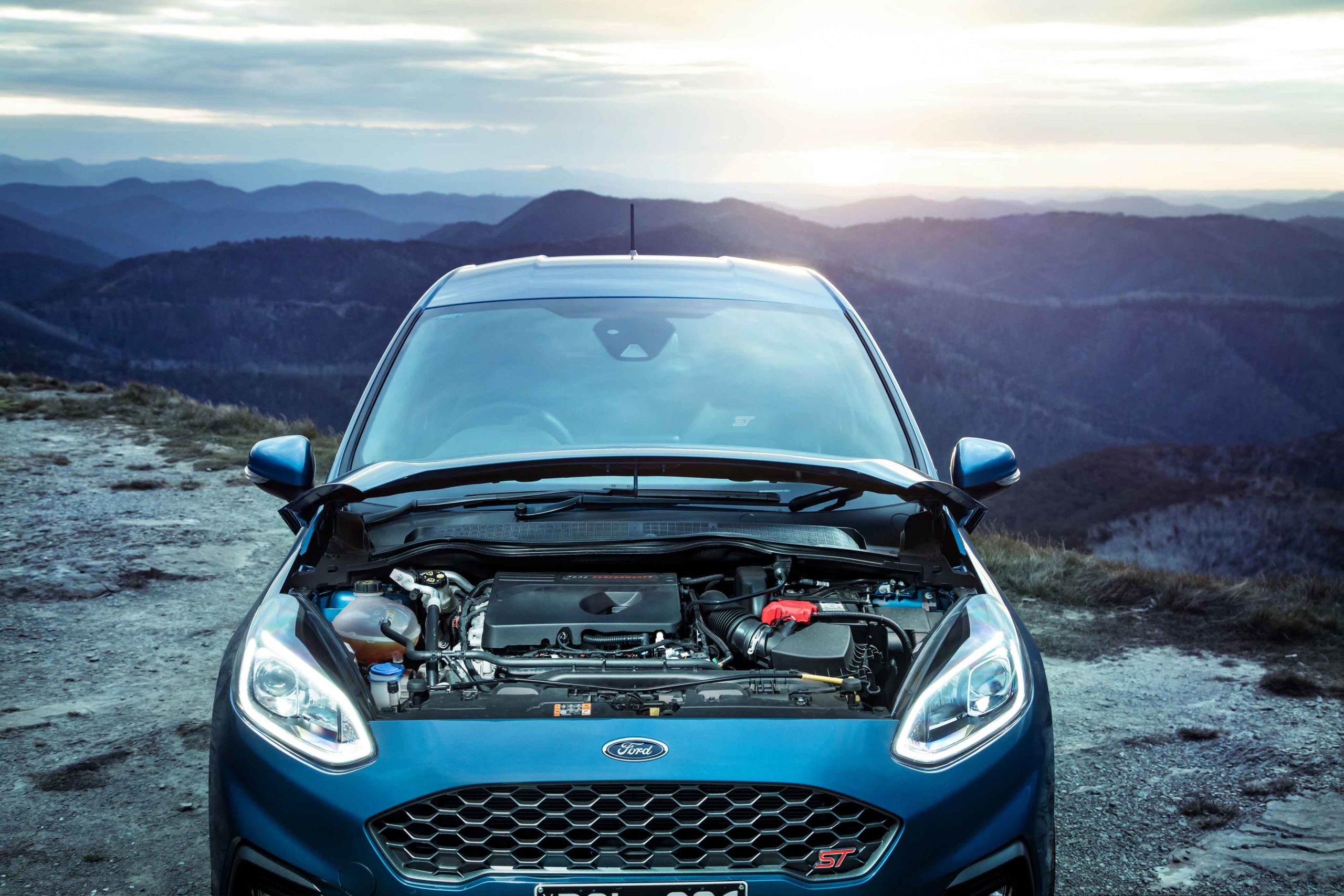
Historically down-sizing from a 1.6-litre four-cylinder turbocharged engine wouldn’t really be possible, at least not without ridicule. But thanks to the wonders of modern engine technology the new Fiesta ST has a 1.5-litre three-cylinder turbo that is actually more powerful. The little powerplant produced 147kW, a big upgrade over the old model’s 132kW, but torque has remained the same at 290Nm.
If you’re nitpicking the new engine, despite its small size, is slightly inferior fuel economy on paper, 6.3-litres per 100km compared to 6.2. But you need to account for the fact the testing procedure is now much more real-world relevant so it’s arguably an upgrade in that department too.
But there’s really not anything to criticize the engine for on any meaningful level – it’s a brilliant mechanical beast. It makes a really sweet three-cylinder growl, rather than a tinny thrum common with three-pot motors, that keeps getting better as you rev it hard to the redline.
It offers excellent performance in such a compact hatch, with 290Nm it launches out of corners with punch and feels really strong across the mid-range. Which is when peak power kicks in and helps take you the rest of the way.
It’s mated to a slick six-speed manual transmission that feels so well tuned to the engine the pair work in brilliant harmony. And it’s the only gearbox option, there’s no automatic, which may dent its sales appeal but does mark out Fiesta ST drivers as hardcore hot hatch lovers.
How does it handle?
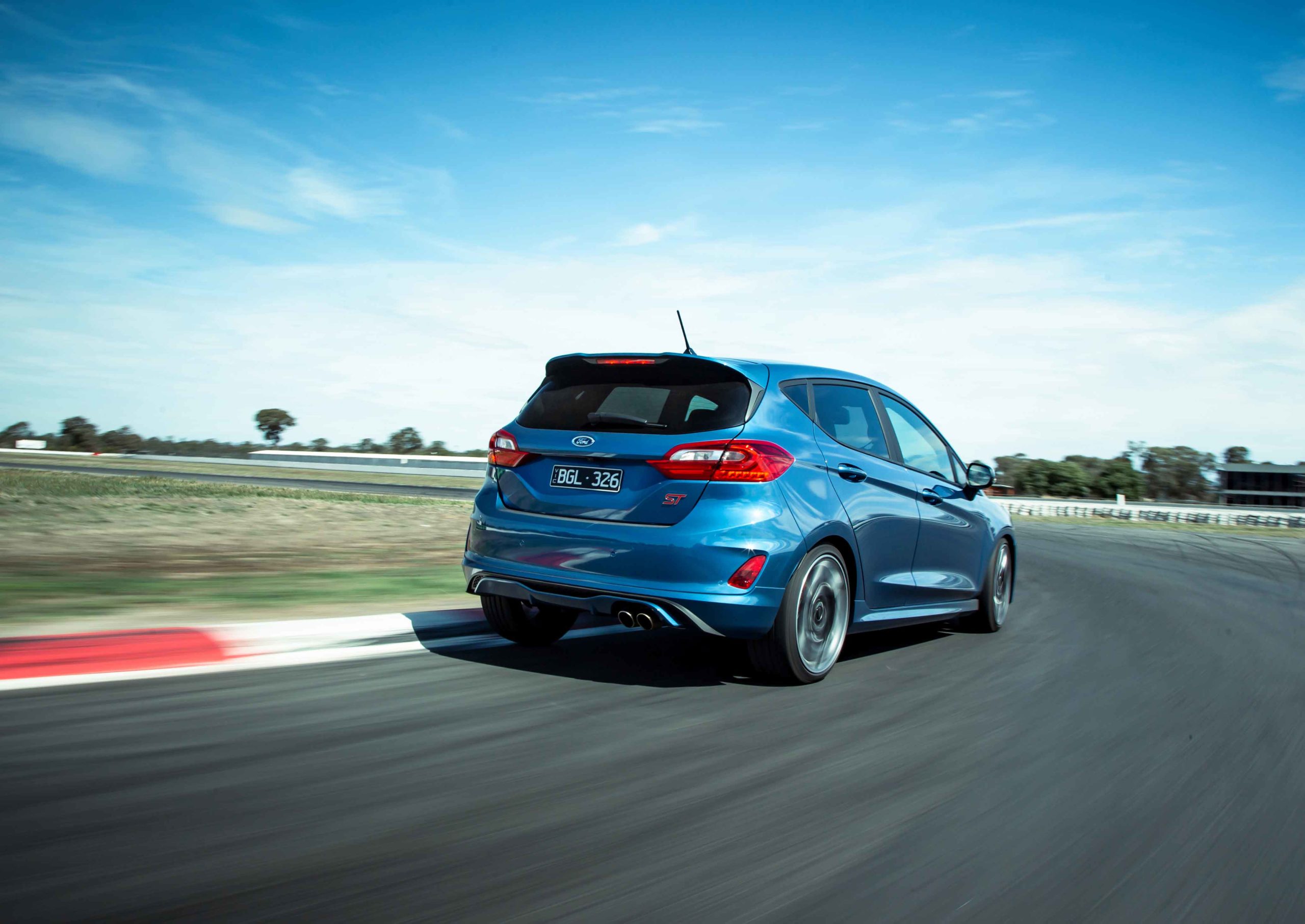
As good as the engine is, power is pointless if you can contain and control it, which is why any truly great hot hatch needs a well-tuned chassis. That’s what the old model had and thankfully the Ford engineers have managed to retain the elements that made the old ST so good and found improvements for the new version.
One of the reasons for that is Ford Australia’s decision to only offer a single specification of the Fiesta ST locally, despite several variants in Europe. They opted for the fully-loaded model equipped with the Euro ‘Performance Pack’ that brings a Quaife mechanical limited slip differential, launch control and shift lights to the party. There’s also 18-inch alloys wrapped in sticky Michelin Pilot Sport 4S tyres – premium hot hatch rubber – replacing the Bridgestone Potenza hoops on the old model.
Factor in all the tuning work done by the Ford Performance experts and you have a hot hatch that is one of the most enjoyable to drive on the market – regardless of size or price.
What makes the Fiesta ST so good is the way it communicates to the driver. Unlike so many modern hot hatches that are loaded with hi-tech goodies to extract a better lap time, this little Ford feels like it’s all about making the driver happy.
There are three drive modes – normal, Sport and Racetrack – that alter the behaviour of the car. Sport makes it feel more alert and alive and is great on the road, but if you’re lucky enough to get it onto a circuit the Racetrack setting switches off any electronic stability control for an even more pure driving experience.
We spent time playing in the Fiesta ST both on the road and around the tight and twisty Amaroo layout at Sydney Motorsport Park and in both conditions it shone. Sport allows you to have plenty of fun but dial up the track setting and it feels even more playful. The back end slides around, but in such a predictable way that you never feel worried.
The Quaife diff does a good job of taming all the power going to the front wheels, even if you do still get the occasional tug of torquesteer, but importantly because it’s a mechanical LSD it always feels like you determine the speed out of the corner rather than relying on electronics.
If there’s a criticism of the driving experience, putting aside the firm ride that’s expected in a hot hatch, it’s the stoppers. The brakes do heat up quickly and don’t provide the same level of feedback as the rest of the package; but that’s a minor issue in the grand scheme of things.
Where would you most like to drive it?
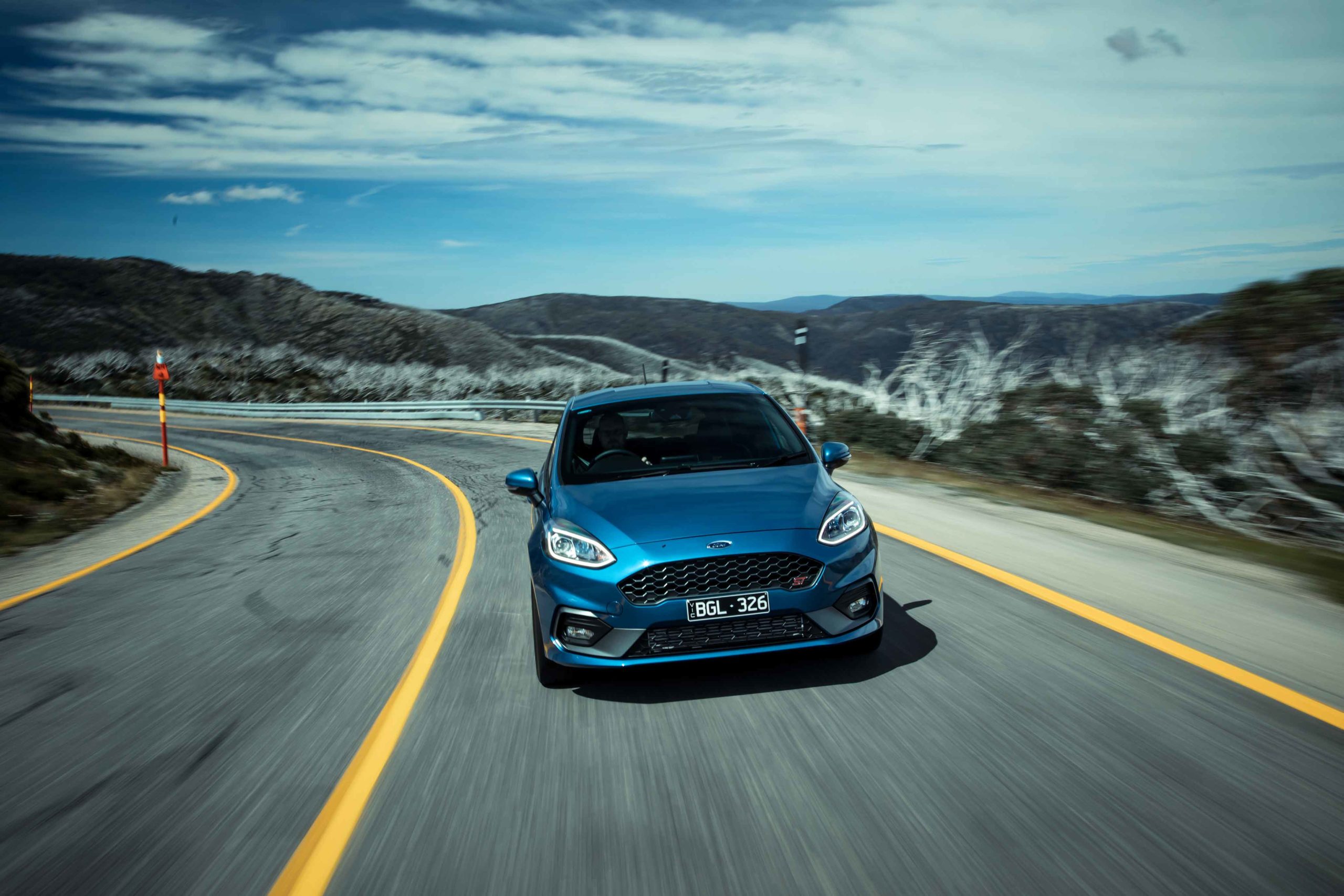
I would love to spend a day tearing up and down the Great Alpine Way between Harrietville and Mount Hotham. It’s one of the best roads in the country, a brilliant blend of corners that climbs to the ski slopes, so it deserves a car worthy of it.
The Fiesta ST may not be the fastest or most expensive car you can buy but it is one of the most enjoyable you can drive and would feel at home charging its way through the Victorian High Country.
What’s the interior like?
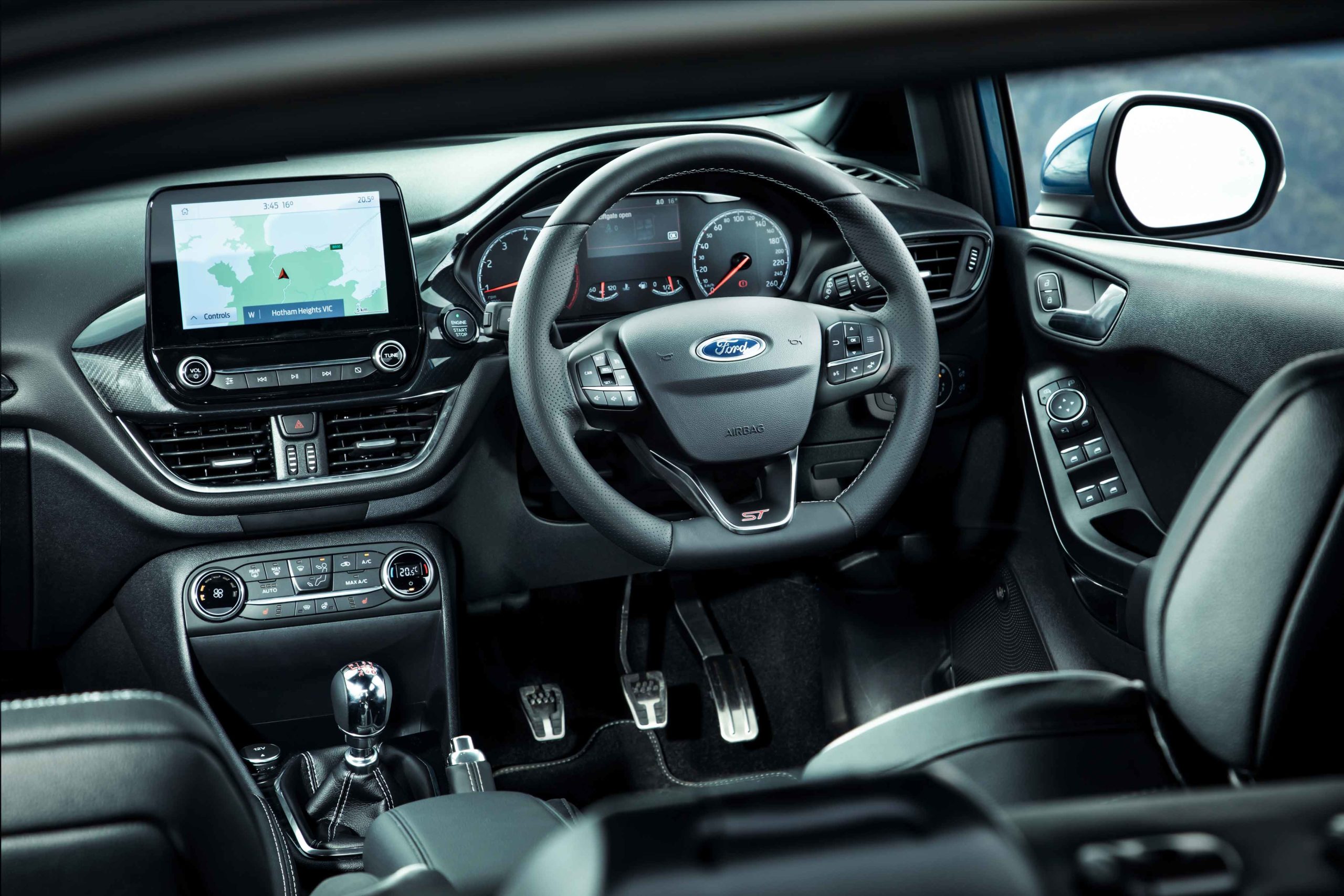
It’s not only a bigger package than the old three-door but there’s also a noticeable improvement in the presentation, fit and finish in the new Fiesta ST.
The thick-rimmed, flat-bottom steering wheel, the Recaro seats and the short gear lever give it a sporty, purposeful look, but the overall level of presentation feels better than the old model.
There’s also more space than the old car thanks to the new five-door layout. Rear room is plentiful for kids and adequate for adults, so much so that at times you forget the Fiesta is a size smaller than a Golf GTI or Hyundai i30 N – it feels spacious enough to compete against small cars.
Is it good value for money?
If you were waiting for a catch, here it comes. Whereas the previous Fiesta ST started at a respectable $25,990 the new model is priced from $32,990 (plus on-road costs). Regardless of the uptick in performance that’s a significant increase and puts the Fiesta ST, but it’s part of the creep up of all hot hatch prices. The Fiesta’s arch-rival, the Volkswagen Polo GTI costs $32,490 and the upcoming Toyota GR Yaris is tipped to start around the $50k mark.
Would I buy one?
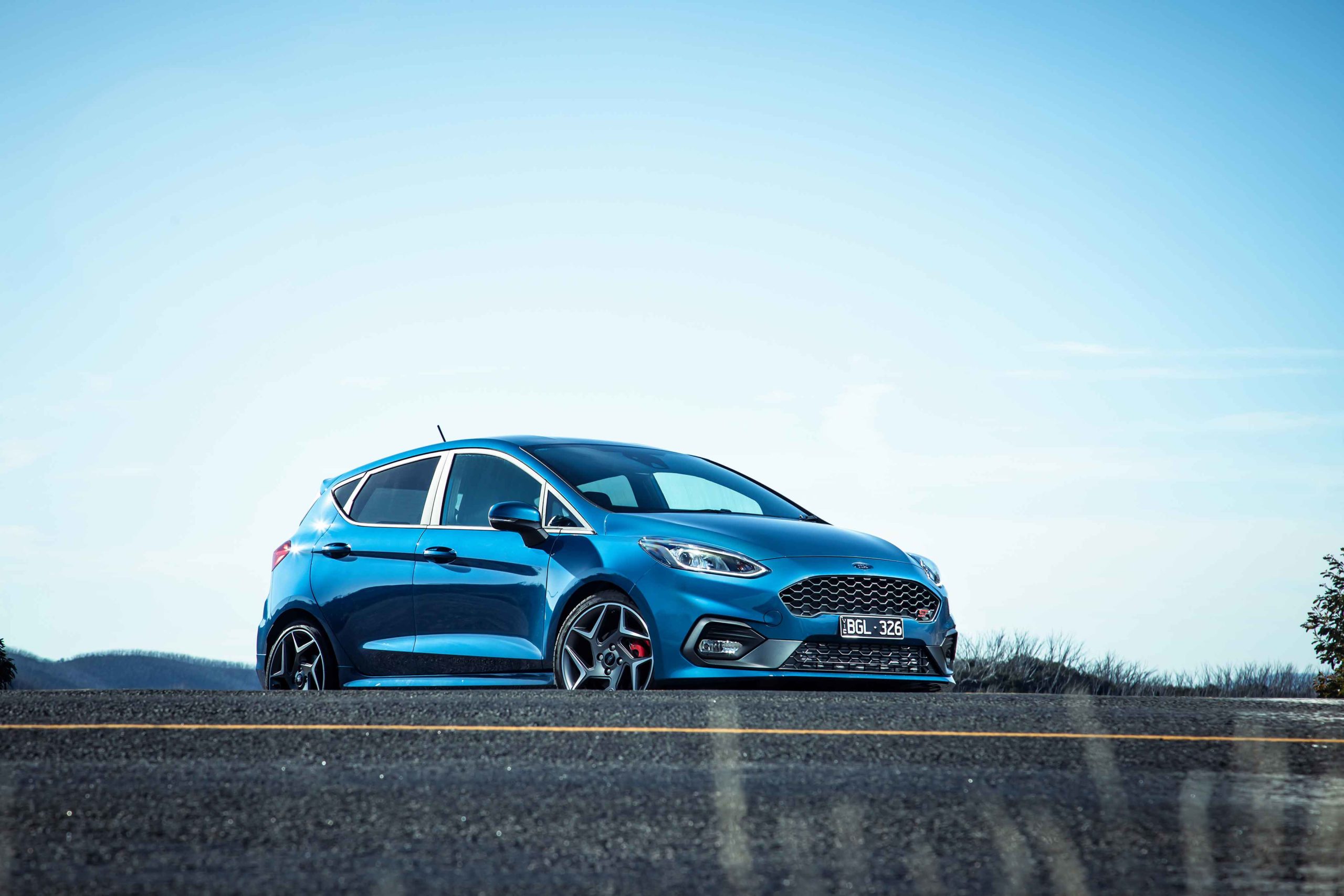
Most definitely. There was a lot of personal expectation on this car after the previous ST impressed me so much, but it managed to exceed them.
The engine is a gem, the new five-door body is more practical and the presentation better, but what impresses the most is the way it handles. It has the kind of analogue, direct feeling that you want in a hot hatch – no gimmicks or gizmos – just a responsive and playful chassis that puts a smile on your face every time you get behind the wheel.
2020 Ford Fiesta ST specifications
| Price: | From $32,290 plus on-road costs |
| Engine: | 1.5-litre three-cylinder turbo petrol |
| Power: | 147kW at 6000rpm |
| Torque: | 290Nm at 1600-4000rpm |
| Transmission: | 6-speed automatic, front-wheel drive |
| Fuel use: | 6.3L/100km |
| Wheels: | 18-inch alloys |
| Tyres: | Michelin Pilot Sport 4S 205/40 R18 |
| Length: | 4068mm |
| Width: | 1735mm |
| Height: | 1469mm |
| Weight: | 1217kg |
| 0-100km/h: | 6.5 secs |



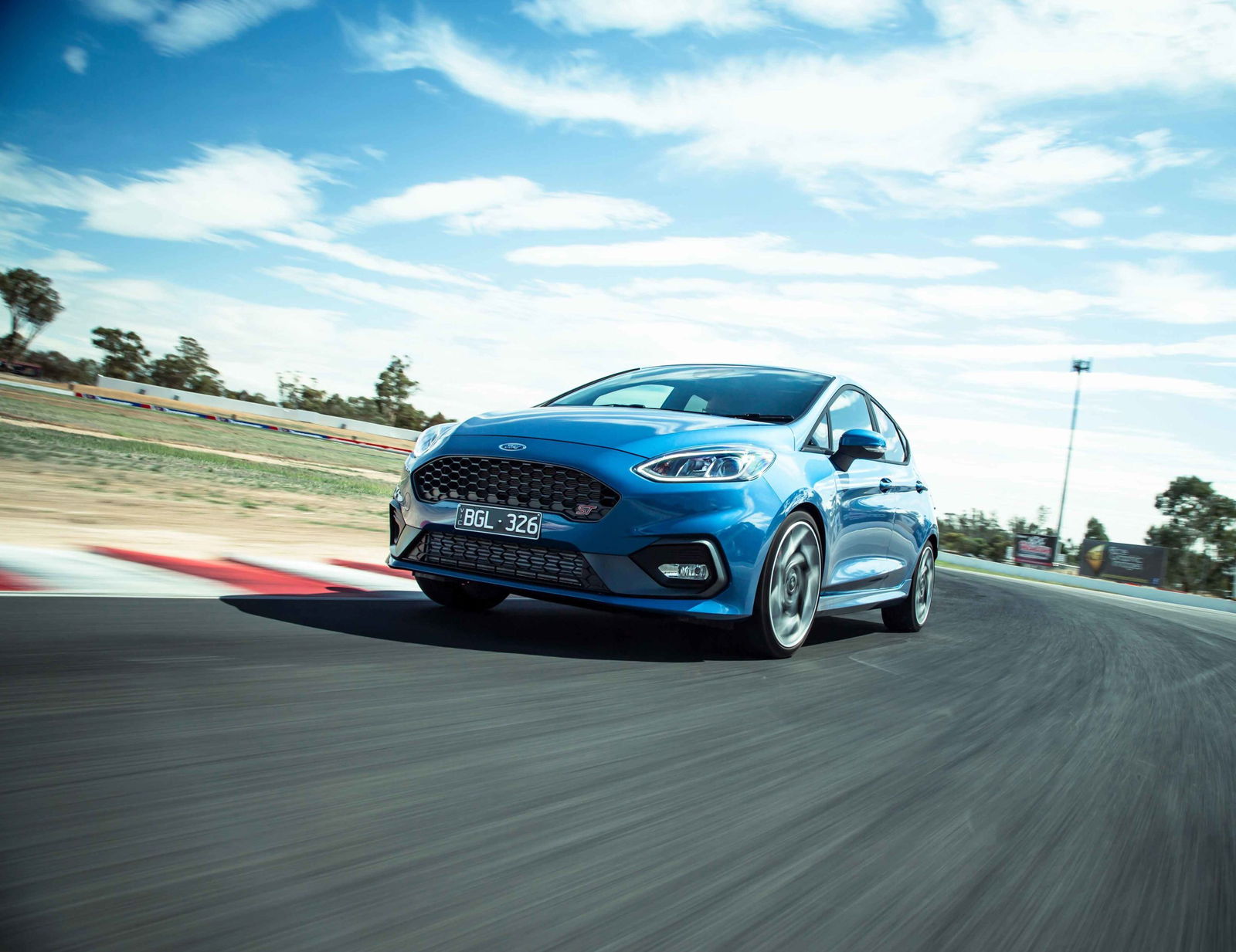









Discussion about this post